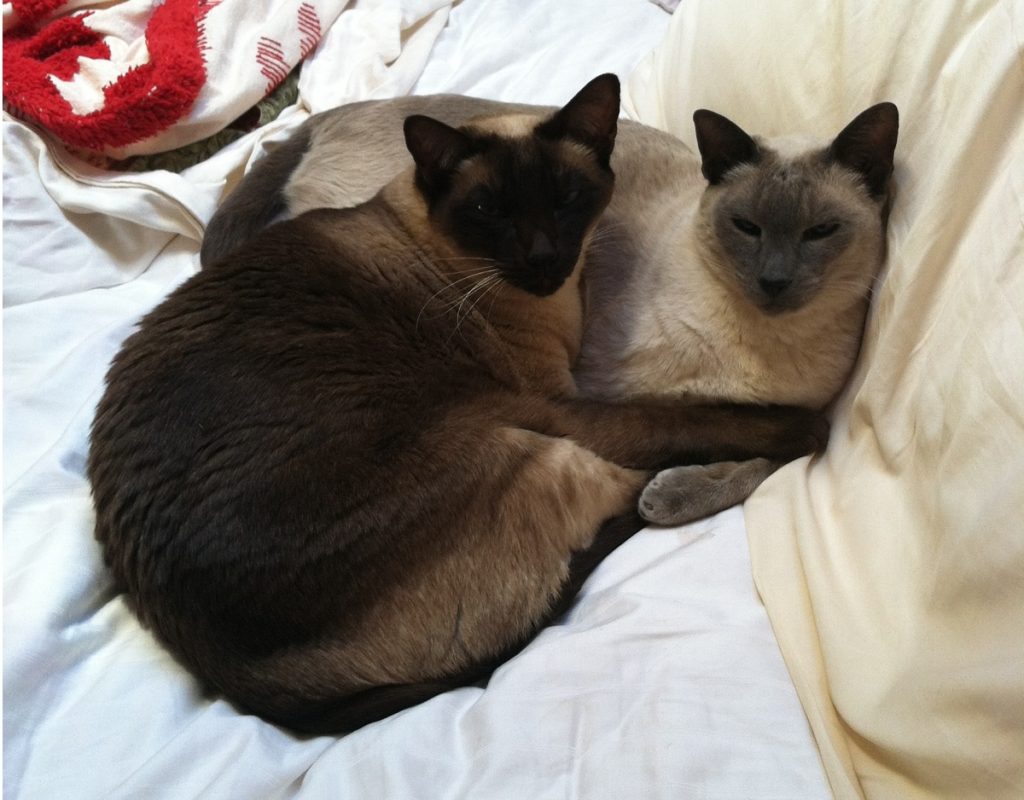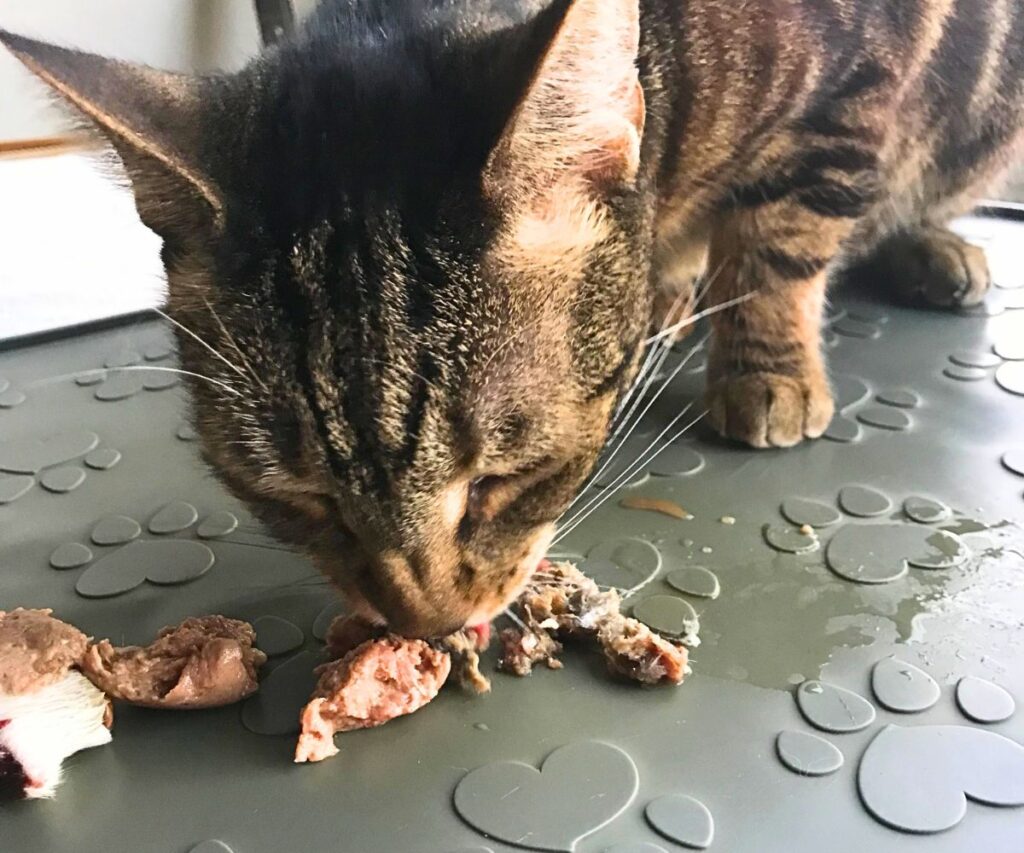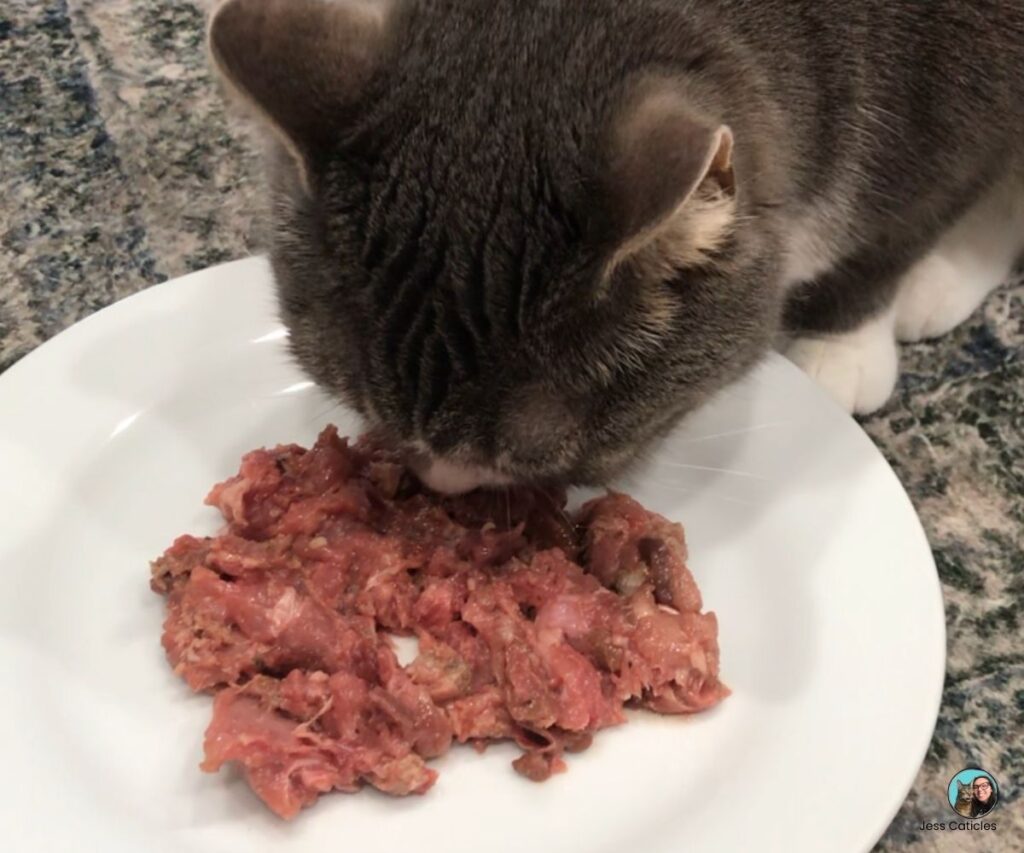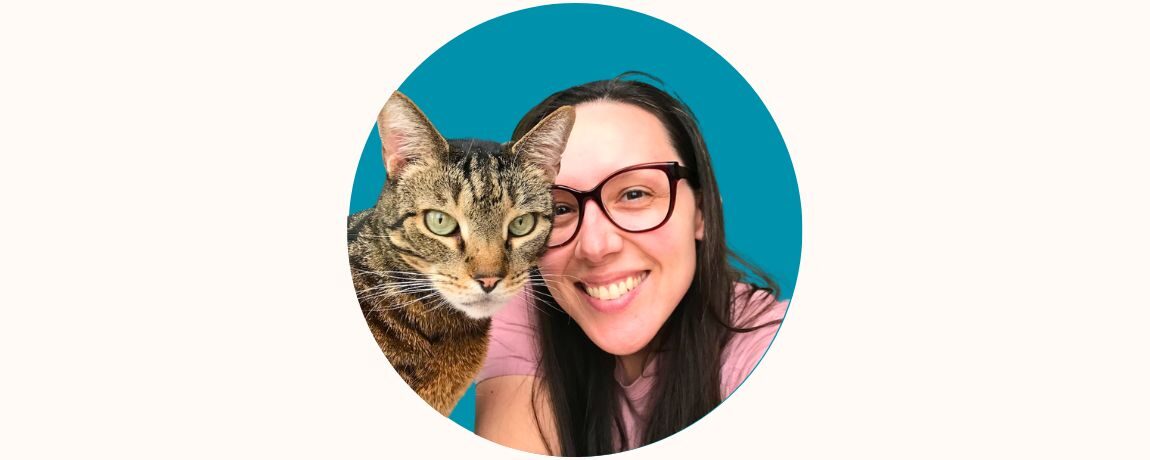A cat weight loss program includes a wet or raw low-carb diet. Overweight cats should not lose weight too quickly. Obese cats have a higher risk of fatty liver disease.
HEALTHY cat food = the best AND most effective way to help your cat lose weight naturally WITHOUT starving.
And no I’m not talking about expensive prescription dry diets or just simply feeding your cat less dry food. That does NOT work.
I’m talking about healthy cat food that is high in moisture, high in meat protein, moderate in fat, and low in carbohydrates —wet or raw!
Our cats need whole, fresh food that nourishes them from the inside out.
Now, it’s not an overnight quick fix, and it does involve actual work.
But don’t let anyone convince you that your cat is “too picky” to eat healthy cat food
Now before we get into the cat weight loss program…
First please know I’m not here to shame anyone for what they feed their cats.
Yes, I’m pointing out real problems (like cat obesity) but it’s because I’ve been there and learned the hard way.
But I also provide REAL solutions so you don’t have to feel the same heartbreak.
Anyway, here’s what you need to do to help your cat lose weight naturally WITHOUT starving your cat:
Determine your WHY
Your why serves as your motivation when things get tough.
Let’s face it: cats get addicted to dry food. So switching to healthy cat food is difficult!
Here’s my WHY: This is my cat Cocoa. He was overweight, ate dry food, and was so desperate he ate the dog’s dry food.

Cocoa was a great cat. He held up the typical Siamese conversations with me and always cuddled with me and his brother Milo (pictured above).
Unfortunately, Cocoa died suddenly at 10 due to dehydration.
My why: I don’t want to relive this heartbreak. So I value HEALTHY cat food to prevent these problems.
Learn how to read labels
High-carbohydrate food fuels hunger and weight gain. And most dry food is VERY high in carbs.

But did you know that AAFCO doesn’t require carbs on the label? YOU have to figure this out yourself.
That’s why learning how to read cat food labels is important.
If you don’t know how to read labels, you don’t know what you’re feeding.
Upgrade to HEALTHY cat food
Healthy cat food contains high moisture, high protein, moderate fat, and LOW carb.
This is healthy cat food because it matches their natural diet.

When you switch to healthy cat food, your cat gets the nutrition he needs and can lose weight naturally WITHOUT starving.
Use my how to transition cat food guide first. Get your cat on healthy food BEFORE you reduce the amount of calories fed.
Cat weight loss plan
Now that your cat is eating 100% healthy food, you can focus on weight loss.
Calculate how many calories your cat is currently eating and write down how much your cat weighs. Your vet should have told you what an ideal weight is for your cat.
Now, each month you will focus on helping your cat lose no more than 1/2 pound until he reaches his ideal weight.
So let’s say your cat weighs 15 pounds and an ideal weight for him is 10 pounds. Your cat will have to lose 5 pounds over the course of 10 months.
Weight loss plan using these numbers as an example:
- Month 1: Feed the amount required for a 14.5-pound cat
- Month 2: Feed the amount required for a 14-pound cat
- And so on
Please read through how much to feed your cat if you’re unsure. Weigh your cat weekly and adjust as necessary.
